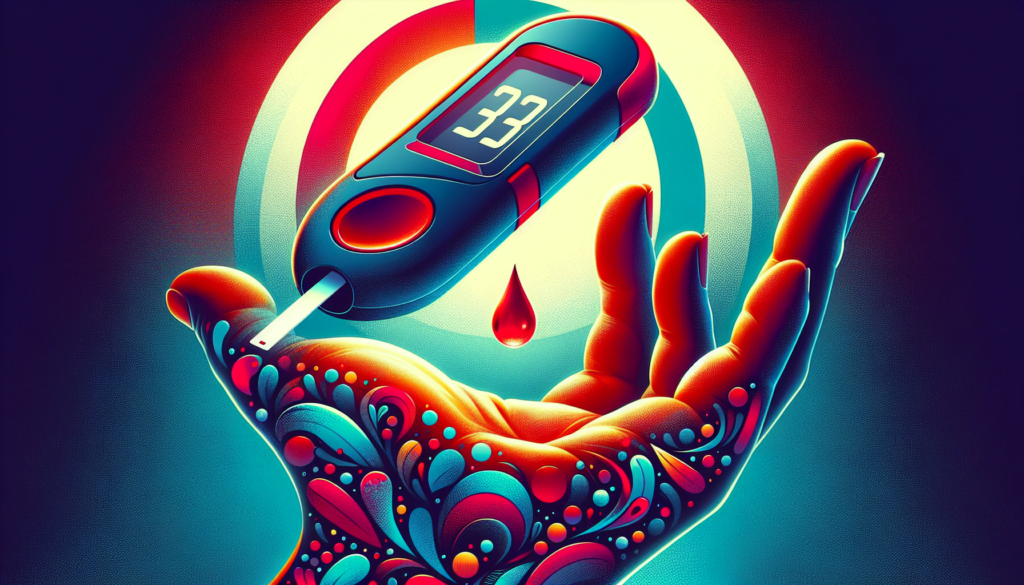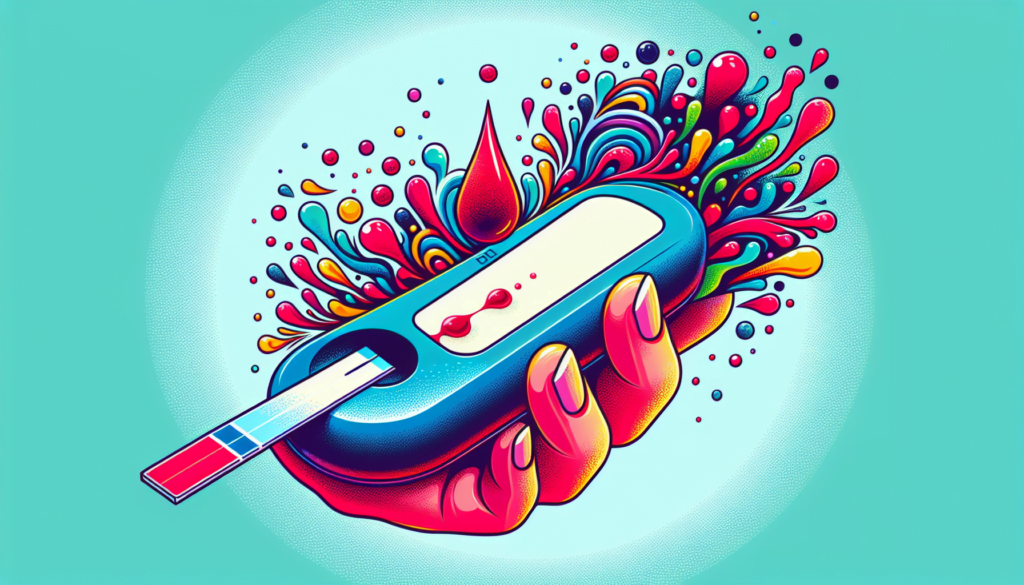Living with type 2 diabetes comes with its fair share of concerns, one of them being the level of blood sugar. It’s a well-known fact that high blood sugar can be harmful, but what exactly constitutes a dangerous level for individuals with type 2 diabetes? Understanding this is crucial for managing the condition effectively and minimizing the risks involved. In this article, we’ll explore the critical threshold of blood sugar that individuals with type 2 diabetes need to be aware of to stay healthy and maintain optimal well-being. So, let’s dive right in and shed light on what level of blood sugar is truly dangerous for those with type 2 diabetes.

Normal Blood Sugar Levels for Type 2 Diabetes
As someone with type 2 diabetes, it’s important to be aware of what constitutes normal blood sugar levels. This knowledge can help you maintain good health and prevent any complications associated with high or low blood sugar levels.
Fasting Blood Sugar Levels
Fasting blood sugar levels are measured after at least 8 hours without food or drink, except for water. For individuals with type 2 diabetes, the recommended fasting blood sugar level is generally between 80 and 130 mg/dL (4.4 to 7.2 mmol/L). These levels indicate that your body is effectively managing glucose even when you haven’t consumed any food.
Post-Meal Blood Sugar Levels
Post-meal blood sugar levels, also known as postprandial blood sugar levels, are measured two hours after eating a meal. For individuals with type 2 diabetes, the target post-meal blood sugar level is generally less than 180 mg/dL (10.0 mmol/L). This level allows your body sufficient time to process the glucose from the meal without causing any spikes in blood sugar levels.
Dangerous Blood Sugar Levels for Type 2 Diabetes
While normal blood sugar levels help maintain good health, it’s essential to understand the dangerous levels associated with type 2 diabetes. Two significant conditions related to diabetic blood sugar levels are hypoglycemia and hyperglycemia.
Hypoglycemia
Hypoglycemia occurs when your blood sugar levels drop too low, typically below 70 mg/dL (3.9 mmol/L). It can leave you feeling shaky, weak, and light-headed. If untreated, severe hypoglycemia can lead to unconsciousness and even be life-threatening. It’s essential to always monitor your blood sugar levels to avoid hypoglycemic episodes.
Hyperglycemia
Hyperglycemia, on the other hand, refers to high blood sugar levels, typically above 180 mg/dL (10.0 mmol/L). Prolonged periods of hyperglycemia can cause damage to organs, blood vessels, and nerves over time. It’s crucial to manage your blood sugar levels and prevent hyperglycemic episodes to avoid any long-term complications.

Symptoms of Dangerous Blood Sugar Levels
Recognizing the symptoms associated with dangerous blood sugar levels is crucial for your well-being. Both hypoglycemia and hyperglycemia have distinct symptoms that indicate a deviation from normal blood sugar levels.
Hypoglycemia Symptoms
Hypoglycemia symptoms often include feeling shaky, sweating, confusion, dizziness, weakness, and palpitations. You may also experience headaches, difficulty concentrating, irritability, and even anxiety or panic attacks. If you notice any of these symptoms, it’s important to address them promptly to bring your blood sugar back to normal levels.
Hyperglycemia Symptoms
Hyperglycemia symptoms can manifest as increased thirst, frequent urination, fatigue, blurred vision, dry mouth, and unexplained weight loss. You may also notice slow healing of wounds, recurrent infections, and constant feelings of hunger. Paying attention to these symptoms can help you identify and manage high blood sugar levels effectively.
Effects of Untreated Dangerous Blood Sugar Levels
It’s crucial not to underestimate the effects of untreated dangerous blood sugar levels. Both short-term and long-term consequences can impact your overall health and well-being.
Short-term Effects
If hypoglycemia is left untreated, it may lead to loss of consciousness, seizures, and even coma, posing a significant risk to your life. Similarly, hyperglycemia can cause a condition called diabetic ketoacidosis (DKA), which is potentially life-threatening. It is important to seek immediate medical attention if you experience severe symptoms or have difficulty managing your blood sugar levels.
Long-term Effects
Repeated instances of hypoglycemia and hyperglycemia can lead to serious long-term complications. These may include nerve damage, kidney disease, eye problems, heart disease, and an increased risk of stroke. Managing your blood sugar levels through appropriate lifestyle choices and medication is essential to minimize the risk of these complications.
Managing Blood Sugar Levels
Taking control of your blood sugar levels is a vital aspect of managing type 2 diabetes effectively. Following a few key strategies can greatly contribute to maintaining healthy blood sugar levels.
Testing Blood Sugar Levels
Regularly monitoring your blood sugar levels is essential. This can be done through home glucose monitoring using a blood glucose meter. By tracking your blood sugar levels, you can identify patterns, make adjustments to your diet and medication, and maintain optimal control over your diabetes.
Eating a Healthy Diet
Maintaining a healthy diet is crucial for managing blood sugar levels. Focus on consuming a balanced mix of carbohydrates, proteins, and fats. Opt for whole grains, lean proteins, and healthy fats, while limiting your intake of processed foods, sugary beverages, and high-sugar snacks. A registered dietitian can provide tailored guidance to meet your specific dietary needs.
Regular Exercise
Engaging in regular physical activity helps your body’s cells become more sensitive to insulin, thereby improving blood sugar control. Aim for at least 150 minutes of moderate-intensity aerobic exercise or 75 minutes of vigorous-intensity exercise each week. Consult with your healthcare team before starting any exercise routine to ensure safety and effectiveness.
Medication and Insulin Therapy
In addition to lifestyle changes, medication and insulin therapy may be prescribed to manage your blood sugar levels effectively. Your healthcare provider will determine the appropriate medications based on your individual needs. It’s important to take any prescribed medications as directed and communicate any concerns or side effects with your doctor.
Preventing Dangerous Blood Sugar Levels
Taking preventative measures is key to avoiding dangerous blood sugar levels and their associated complications.
Healthy Lifestyle Choices
Embracing a healthy lifestyle goes a long way in preventing dangerous blood sugar levels. This includes maintaining a nutritious diet, engaging in regular physical activity, managing stress levels, and getting adequate sleep. By making these positive choices, you can significantly reduce the risk of fluctuations in blood sugar levels.
Regular Medical Check-ups
Regular check-ups with your healthcare provider are crucial for monitoring your overall health and managing diabetes effectively. They will assess your blood sugar levels, monitor any potential complications, adjust your treatment plan if necessary, and provide guidance and support on managing your condition.
Conclusion
Understanding normal and dangerous blood sugar levels for type 2 diabetes is essential to maintain good health and prevent complications. By being aware of the symptoms and effects of dangerous blood sugar levels, you can take proactive steps to manage and prevent them. Remember to test your blood sugar regularly, adopt a healthy lifestyle, follow a balanced diet, engage in regular exercise, and consult with your healthcare team for personalized guidance. With diligence and proactive management, you can effectively control your blood sugar levels and lead a healthy, fulfilling life with type 2 diabetes.


